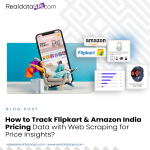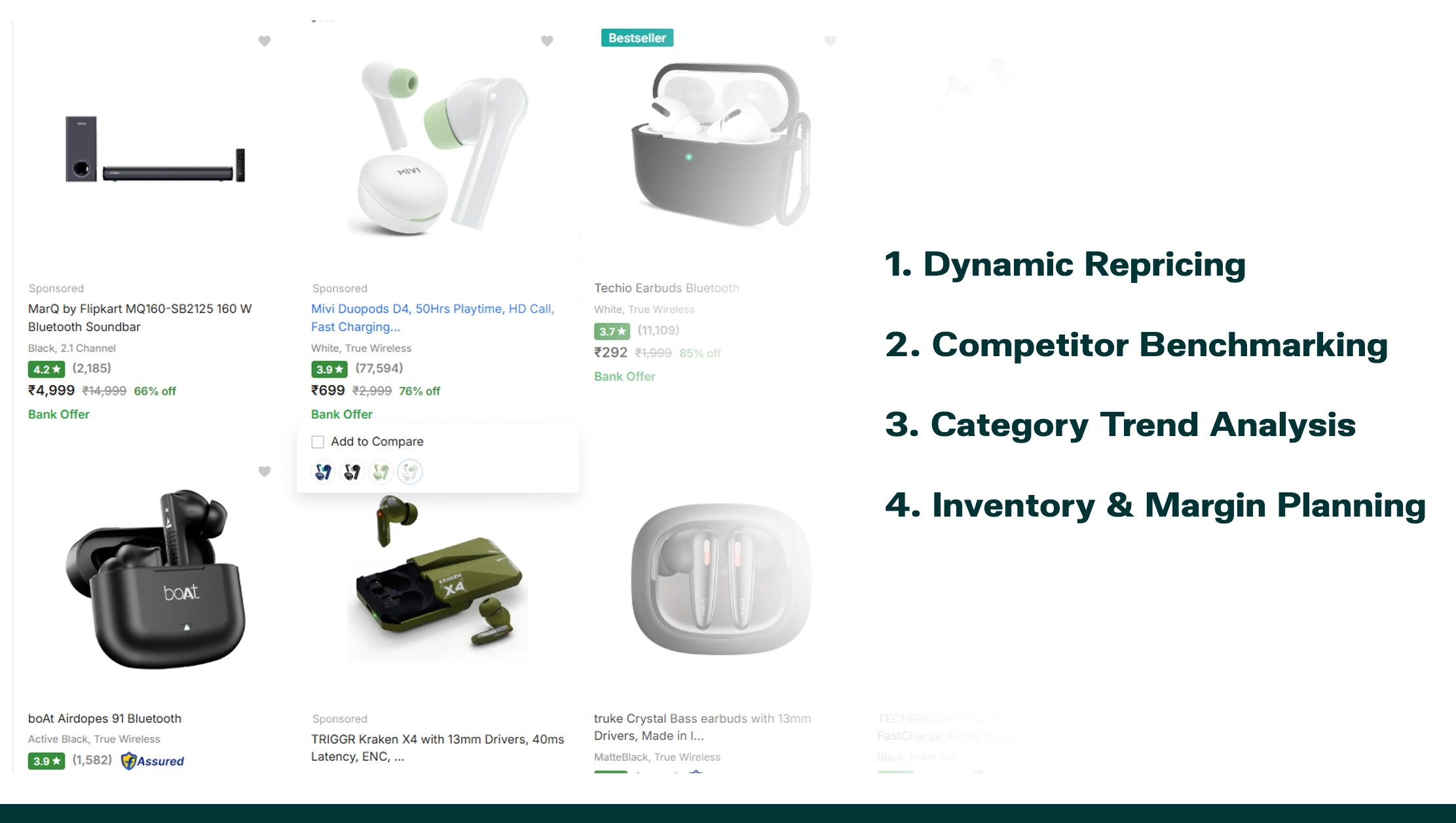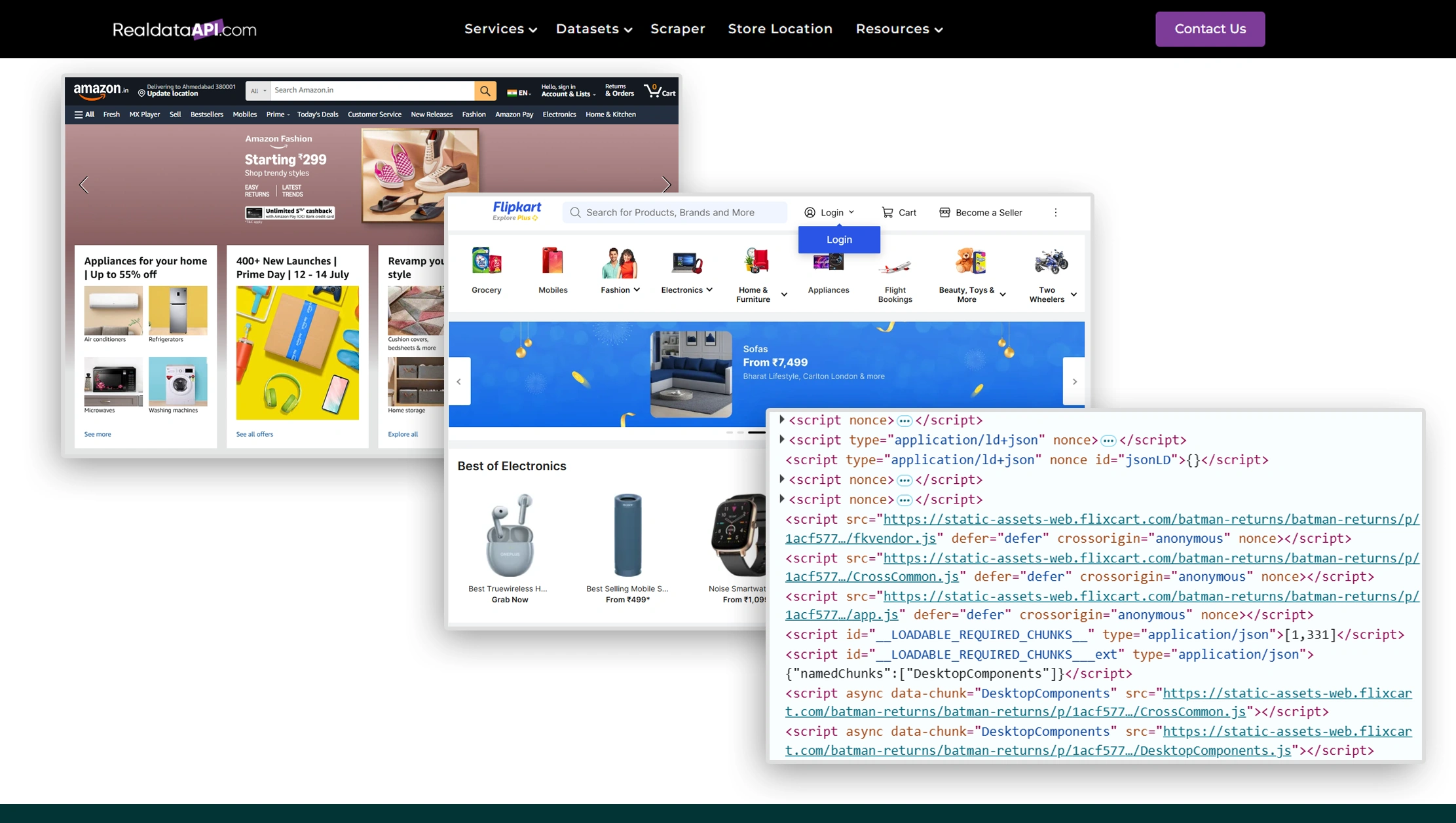


Discover how Web Scraping for Price Insights helps track Flipkart & Amazon India pricing data.

The Indian eCommerce market is intensely competitive, with platforms like Amazon and Flipkart constantly adjusting their product prices in response to demand, promotions, and competitor moves. For sellers, manufacturers, and analysts, having access to accurate, timely, and structured pricing data is no longer optional—it’s a strategic advantage. This is where Web Scraping for Price Insights plays a crucial role.
With millions of SKUs updated in real-time, tracking this data manually is impossible. Automated scraping tools and APIs help businesses collect, structure, and analyze real-time pricing data from Flipkart & Amazon for decision-making across pricing strategy, promotions, inventory planning, and market intelligence.
In this blog, we’ll explore how to use web scraping effectively to track price fluctuations, monitor competitors, and drive actionable insights from India’s top online marketplaces.
![]()
Dynamic pricing is now the norm. Flipkart and Amazon use real-time algorithms to modify prices based on several factors:
Being blind to these shifts puts businesses at a disadvantage. If your competitor drops their price by 10% and you’re unaware, it can directly impact your conversions. Thus, using tools like an Amazon India price tracker or web scraping Flipkart prices gives brands visibility into real-time shifts.
Furthermore, platforms like Amazon often have hidden discounts, coupon-based prices, and member-specific offers. Extracting this data requires smart scraping setups that can interpret HTML structures, AJAX calls, and embedded JSON data.

Start by collecting the product URLs for items you want to track. This can be manually curated for fixed SKUs or scraped via category pages using pagination logic.
Use browser developer tools (Inspect Element) to locate price tags, product names, and seller info. Flipkart and Amazon use class-based HTML rendering with dynamic tags like span, div, and embedded scripts.
You can opt for:
These methods help extract price and stock information at scheduled intervals.
Both Flipkart and Amazon use lazy loading and AJAX-based rendering. Your scraper should:
Store your scraped data in:
From here, you can track competitor prices, price changes by hour/day, and seasonal discount trends.
Scraping publicly available pricing data is legal in most cases when done responsibly. However, to stay compliant:
Responsible scraping ensures sustainability and avoids legal pushback.

Brands use scraped data to update their prices dynamically to stay competitive and profitable. This is critical during flash sales or when a major competitor changes pricing.
Retailers and sellers benchmark their pricing against competitors using real-time price tracking India systems. This allows for better positioning during marketing campaigns.
Over time, pricing data helps spot trends—like average price drops in mobile phones or premium pricing in appliances.
Real-time insights allow sellers to make better decisions on stock replenishment and pricing margins, especially during festival seasons like Diwali or Big Billion Days.
Boost profitability and stay competitive—use Real Data API to automate dynamic repricing, track competitor deals, and unlock real-time pricing intelligence across top eCommerce platforms.

Real Data API specializes in web scraping Flipkart and Amazon India product data at scale. Whether you need 100 SKUs or 10,000+, our infrastructure delivers accurate, structured, and up-to-date pricing datasets.
Tracking pricing data from Flipkart and Amazon is not just about monitoring competitors—it’s about building intelligent pricing, marketing, and sales strategies backed by data. Through Web Scraping for Price Insights, businesses in India can gain a major edge in an increasingly competitive digital retail landscape.
Ready to track pricing trends with precision? Contact Real Data API today and transform how you compete in eCommerce.
Know More: https://www.realdataapi.com/track-flipkart-amazon-india-pricing-data-scraping.php
